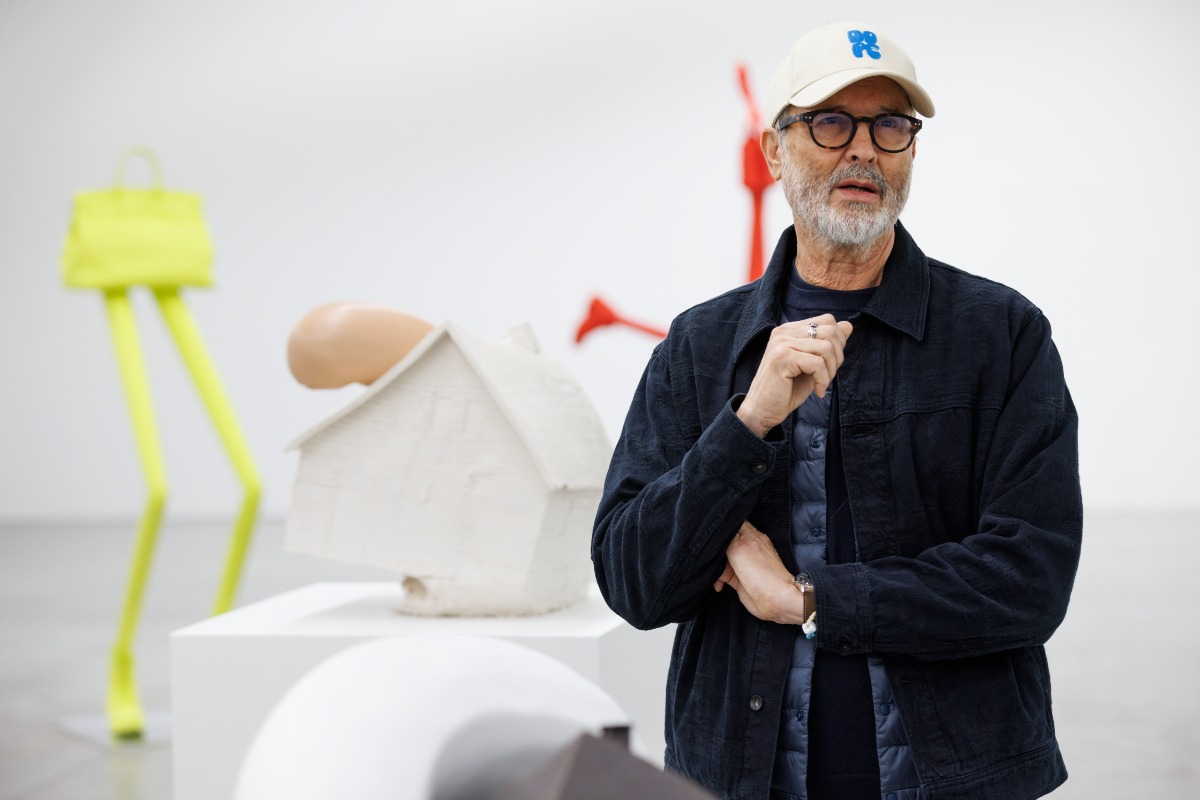
Paradise is so boring
An interview with artist Erwin Wurm
The solo show by Erwin Wurm, titled How It Is, borrows its name from Samuel Beckett’s 1962 novel and shares its title with Wurm’s own piece from 2024 (from the One Minute Sculpture series). The exhibition is on view at the Zuzeum Art Centre in Riga until September 14, 2025.
Focusing on the motto “everything is connected to everything else,” the show offers a chance to discover the full range of tools Wurm uses in his artistic practice. Absurdity and the deconstruction of sculpture are, of course, some of his most striking hallmarks. Along with the smirking at the status symbols of consumer society and the toxic atmosphere of the modern world. The show reveals almost all narratives, motifs and heroes present at the artist’s work—among the most well-known being Fat Cars, including the silver, bloated Fat Convertible (2005) “seated” at the center of the main hall, and the One Minute Sculpture series, which began in the 1990s. The examples of this serie occupies the Art Centre’s small hall, where visitors, by following the artist’s instructions, can stage their own absurd theatre—briefly becoming a part of Wurm’s art. Simply by performing ordinary, aimless, and absurd physical tasks. Some of the One Minute Sculptures are accompanied by One Minute Photographs, in which viewers are captured in the moment they become a temporary part of the object, showing the transition moment of the sculpture.
During a guided tour of his exhibition, Wurm admits that he initially wanted to become a painter but ended up in a sculpture class. Completely disappointed at first.
“But after about half a year, I decided maybe it was a challenge—and maybe I could try to make something out of it. From that point on, I began thinking and working around the notion of sculpture. What does it mean to create a structure? What happens in the transition from two to three dimensions—skin, surface, mass, volume, weight, time? These are all crucial elements of sculpture.
At the same time, I was reading a lot, as always. One day I read something that said: if you want to be successful, you have to overcome your father. I understood this in the context of my studies in the 1970s. At that time, minimalism, conceptual art, pop art, land art—all the -isms—were the prevailing modes. Everyone was expected to work in those styles.
But I thought: if I do that, I'm putting myself at the very end of a long line. I wanted to do something else—something that didn’t fit into the current trends or popular opinion about what art is supposed to be today.”
Vurm’s art tells the story of contemporary society, with a narrative thread that largely weaves through the shallowness of the world, the craving to be noticed, to consume. Walking Bags balanced on a narrow, thin legs, whose outlines resemble the most coveted objects from luxury goods shelves – may be the most direct reference to our limited minds, imprisoned in a cage of status and greed. “I ask questions to society – through the mirror, through the glasses of sculptural motion.” He works with themes and materials that are part of everyday life. And it can even be his own sweater, which after the exhibition turns from an art object back into a piece of clothing.
“You could go to an exhibition, see these sweater objects hanging there, but after the show was over, you could take them off and wear them again.”
Photo: Arterritory.com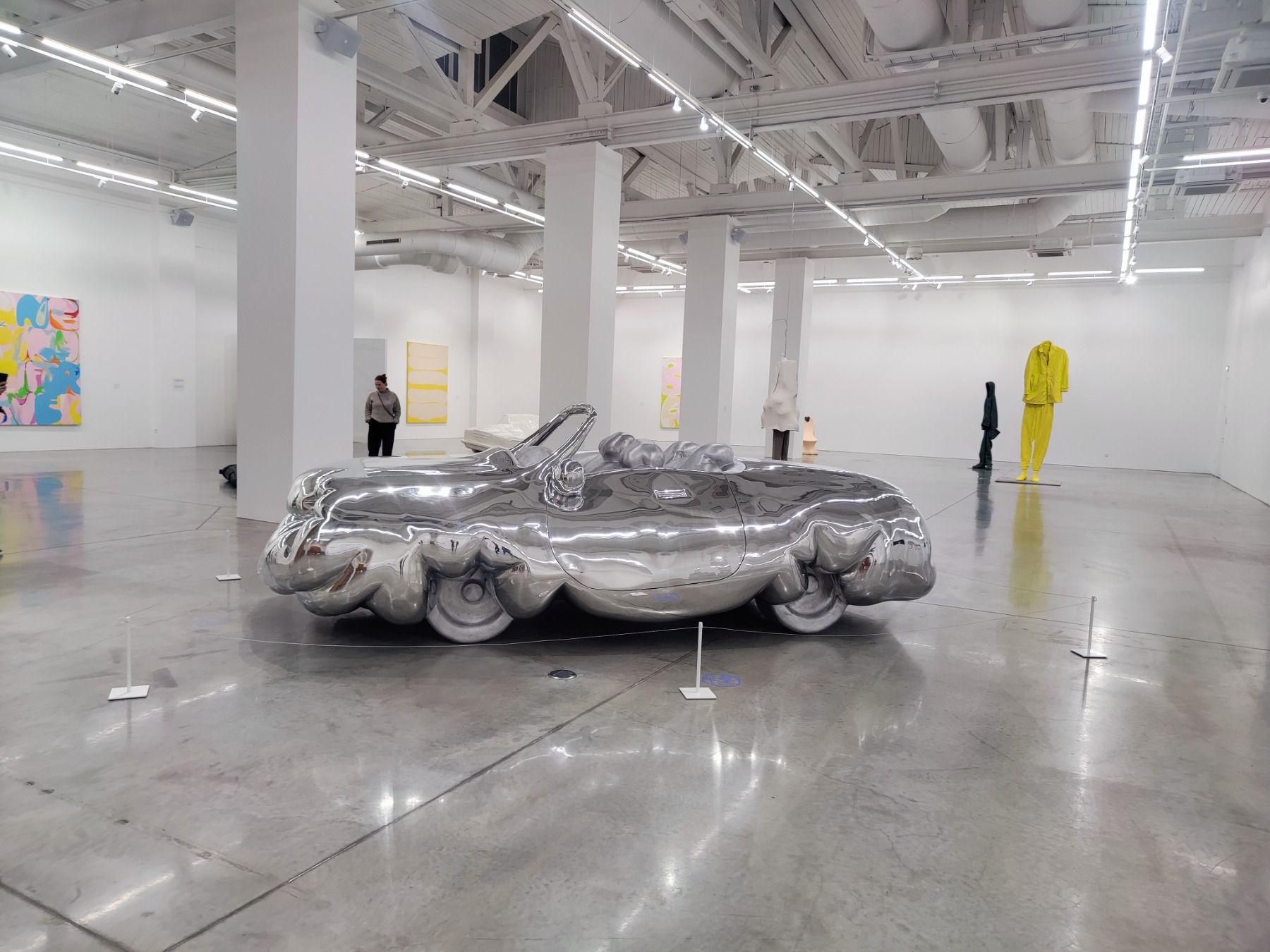
If you look at the world from the perspective of the absurd, as you often do in your work, is it still possible to define what is craziness and what is normal? Do you have an answer for yourself?
It’s over the top, what’s happening. But you know, it’s not just happening now. Over the last few decades, we in the West were living on the calmer side of the world, because there was no war. There was the Cold War, but then it was over. And then came that famous book by American political scientist Francis Fukuyama — The End of History and the Last Man (1992) — which suggested that the West had won, and everything else would just flow smoothly from there. But that’s simply not true.
I think all of this is part of human history. We haven’t learned from war. We’ve learned nothing from the past. I mean, just look at what’s going on — it’s horrible. And then we have all these presidents, especially in the States. It’s a nightmare.
You can say Trump is an idiot, or whatever people call him — but still, there must be a reason why people voted for him. I believe the others also made a lot of mistakes.
And yeah, I use to read bits and pieces — never the whole book — of Alighieri Dante’s Divine Comedy. You know, The Divine Comedy and Dante — it’s not funny. It’s a tragedy of the world. It’s about hell. And hell is made of circles. The deeper you go, the madder and chaotic it becomes.
When you look at our world from that perspective, maybe it becomes a bit more understandable — or at least acceptable. This is just our world. We were made like this. We’re not the good guys. We’re not the smart guys. We’re always caught in this deep, troubling mess. All the time.
There’s so much history. It’s unbelievable what has happened to the world. And we’ve learned nothing. Absolutely nothing.
Photo: Dasha Trofimova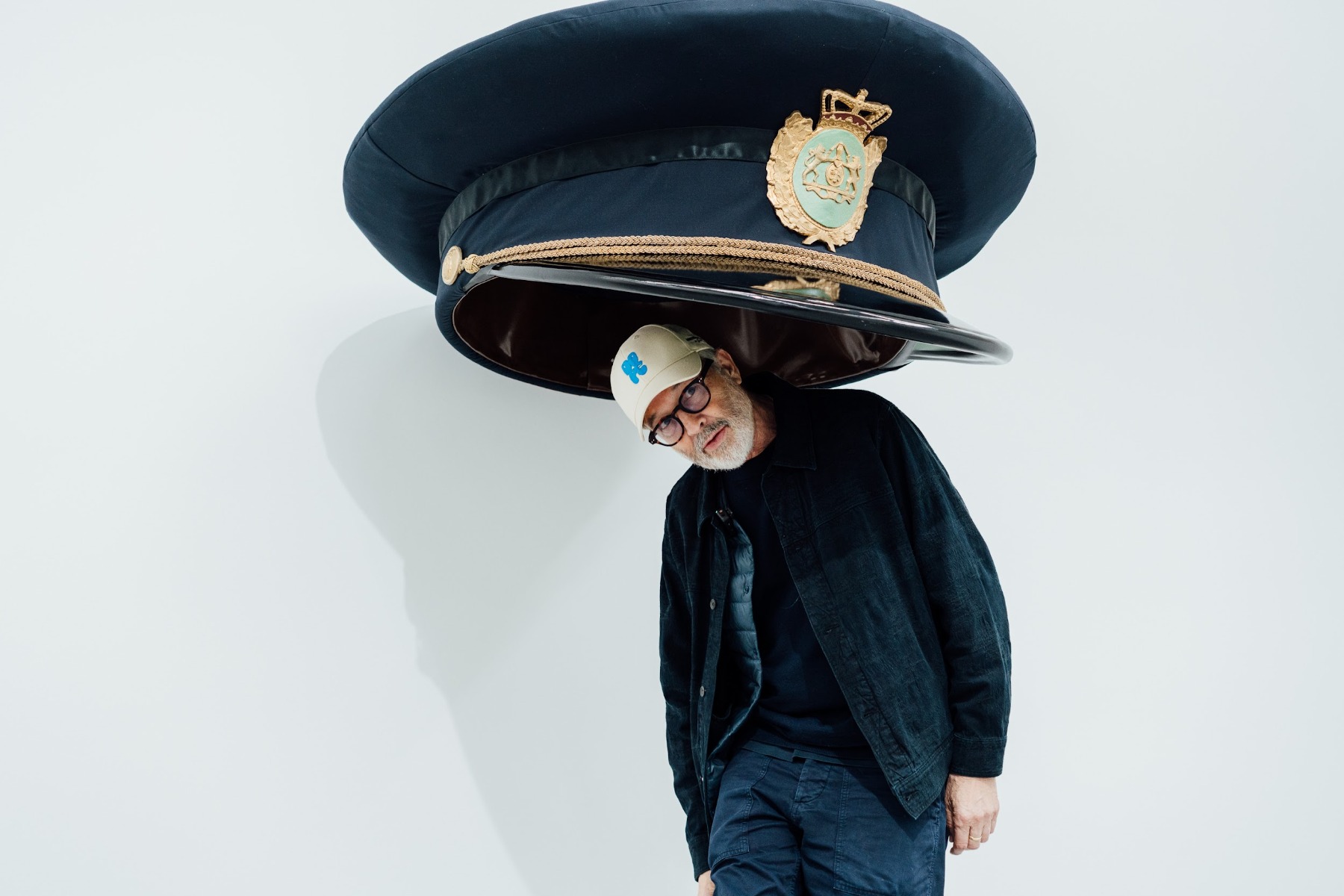
During the exhibition tour, you mentioned that there was a need for a time gap to realize how toxic the ’40s and ’50s were. But do we really need that kind of distance anymore to recognize how awful things are right now?
I want to address this to people and show it to them so they can understand. People often look back at the 1950s — post-war, post-Nazi era — and clearly see what was wrong. But the same kinds of things are happening now, and people believe these are the good times. That’s just not true.
I want to show that when we look back, we see the past more clearly — and that past is still part of my lifetime. When I look back at the society I lived in, it was completely messed up. But my point is: it’s also messed up now. Really terrible. And maybe in a few decades, we’ll finally recognize that this time — right now — is also deeply flawed, full of crazy ideas.
You mentioned Dante. There is an interesting story behind The Divine Comedy: it was very difficult for Dante to write about paradise. For him, it was much easier to write about hell.
You know, there are several songs and books about paradise. Paradise is so boring that nobody really wants to be there, because you just have to sing “holy, holy” all day long. And who wants that? So paradise is a projection, a wish — and maybe it’s better that not all our wishes come true. I don’t know.
Photo: Dasha Trofimova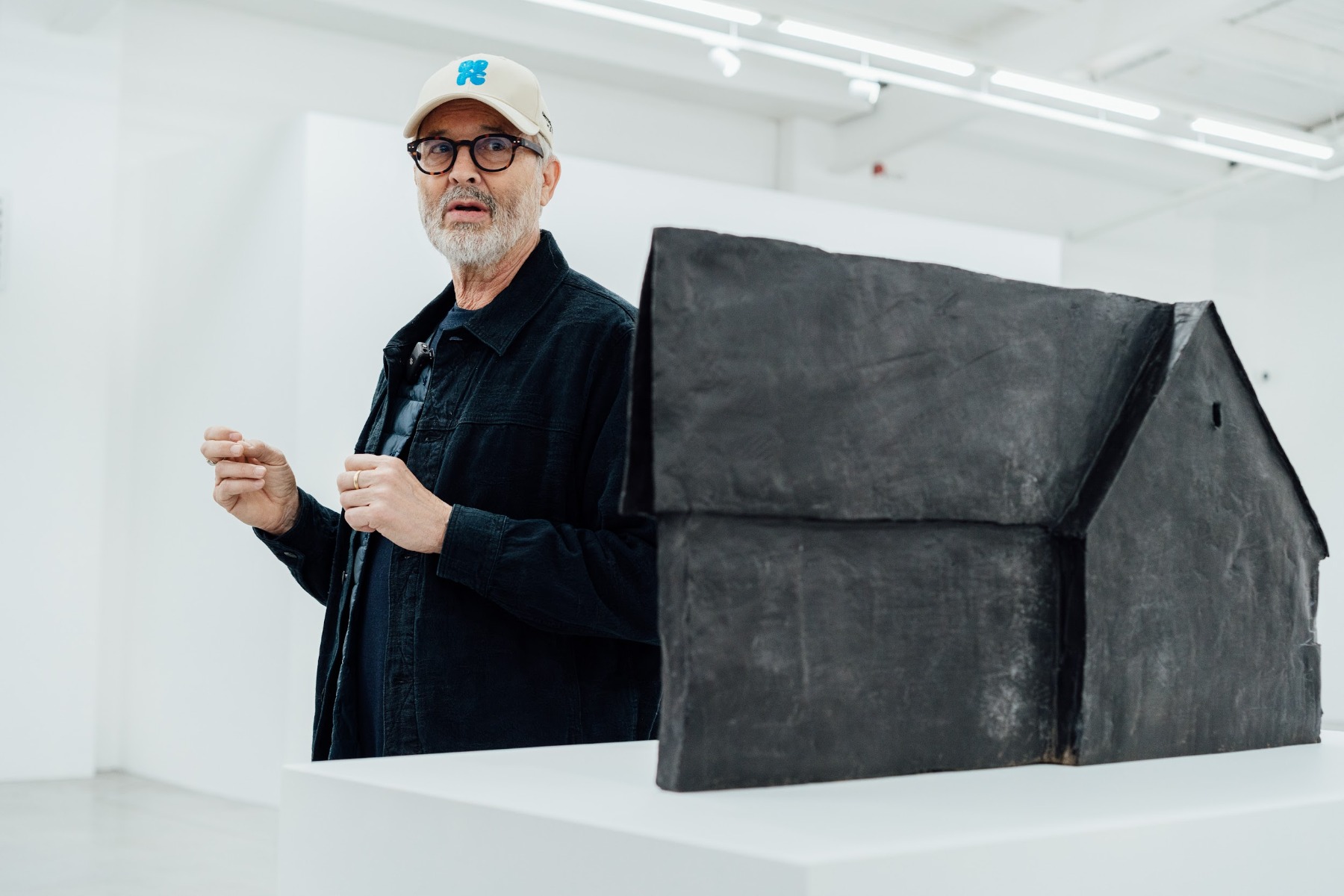
When looking at your Narrow House, I know there’s a different story behind it, as you mentioned. In a way, we live in a very connected and global world, but there’s also a feeling that our minds are developing tunnel vision — becoming narrower and narrower.
But, you know, there’s a good reason for this. I recently read from different psychologists that we are not built to handle all the tragedy happening in the world because we are designed to live in small communities. Back when we were hunters and gatherers, we traveled with these small groups, and now the overload of information is far too much for us to process.
When we hear about mass shootings in different parts of the world, it’s simply too much for our mental well-being. For me, I’m definitely addicted to this stupid phone. I don’t answer emails, and I don’t open my mail, but this phone still controls me. I hope to be strong one day and stop reading the news altogether because it always brings me down.
Photo: Dasha Trofimova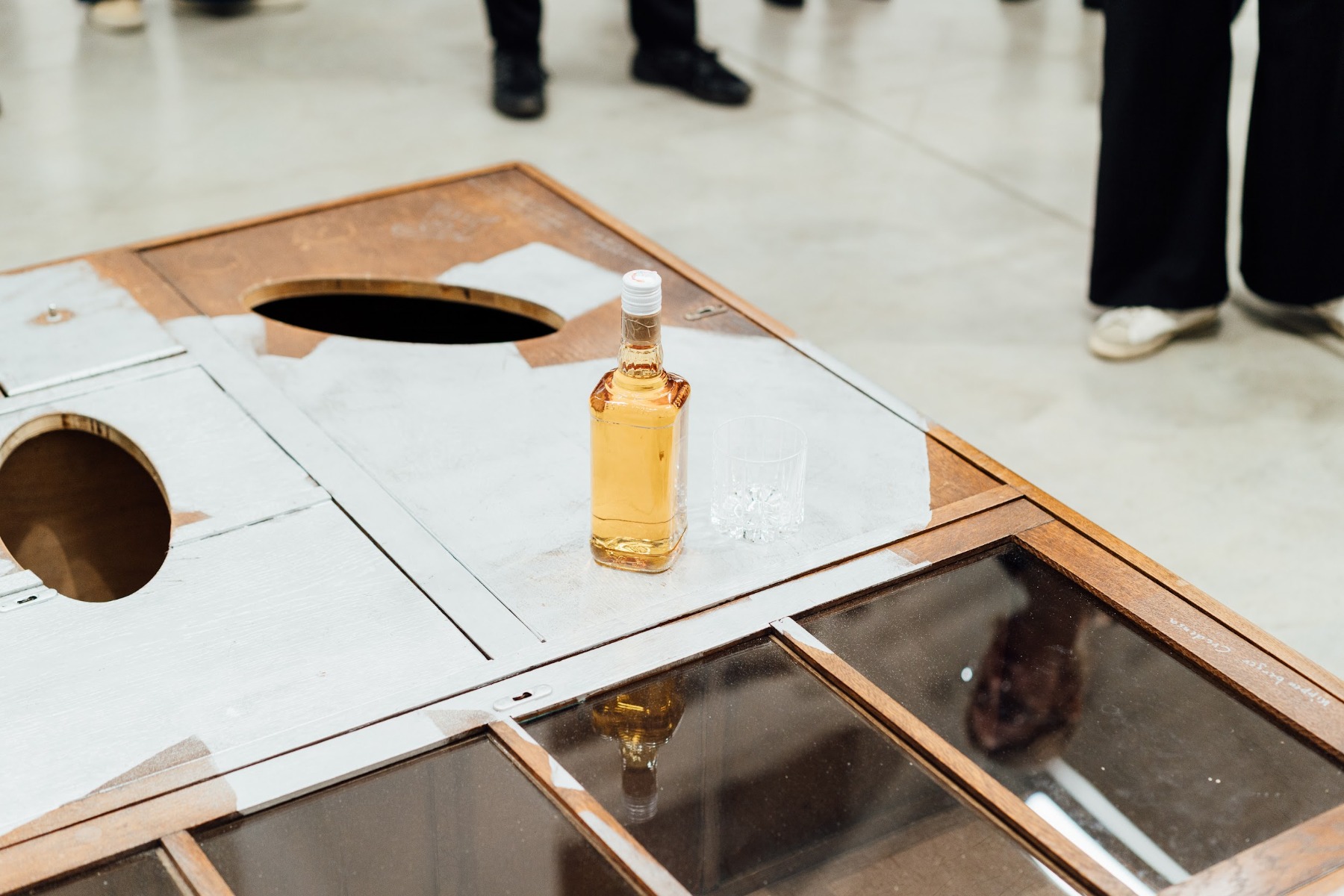
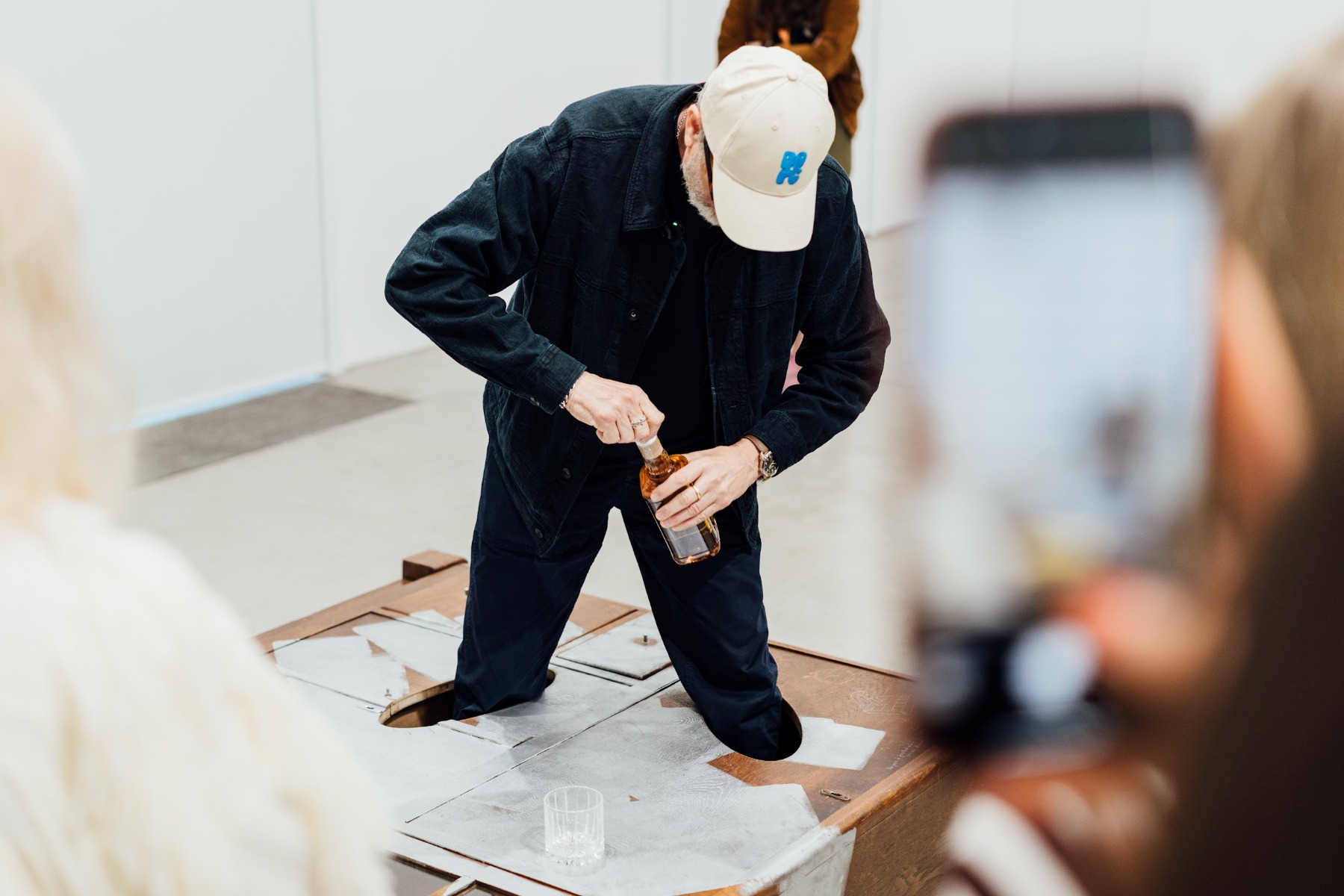
In 2019, you created the Drinking sculpture series. One of those works is also exhibited in Riga. I'm curious—why did you decide to use alcohol in that sculpture? There are many other ways to expand consciousness or to get intoxicated…
Yeah, but it’s a typical artist excess from the ’50s, ’60s, and ’70s. There’s research showing that pop stars took drugs, DJs did drugs, but artists drank. I don’t know why.
Maybe it’s just quicker? (laughs)
Exactly, and maybe you can control it better. I don’t know — I have no idea.
Photo: Dasha Trofimova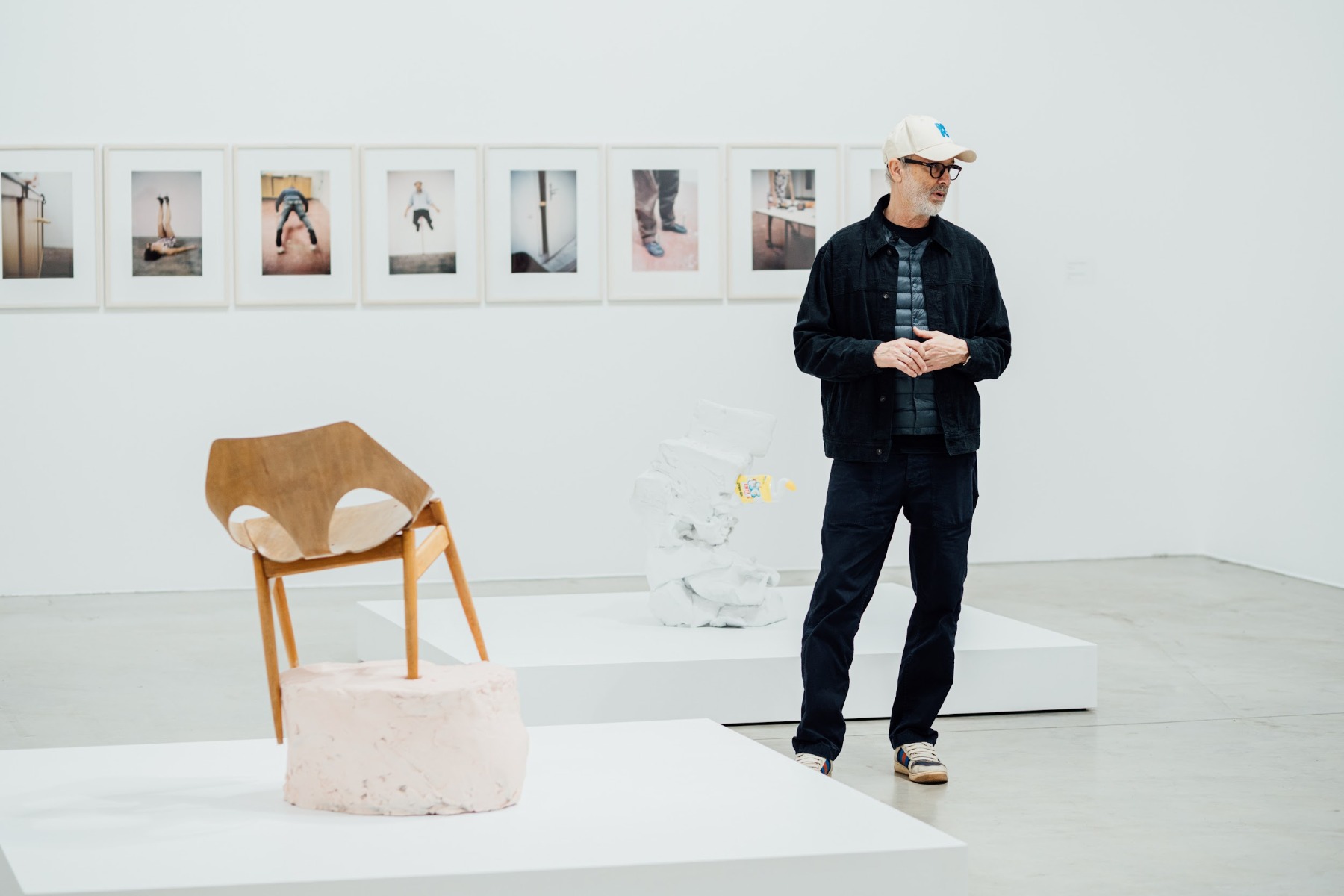
At the beginning of your One Minute Sculptures series, you also used a Polaroid camera. Why did you stop?
Because of the mobile phone. When I created the One Minute Sculptures in 1996, mobile phones didn’t even exist yet. I wanted to create something that people could take home with them. I even signed some for $100—I thought it was a great business idea. But then, it became unnecessary because mobile phones are much more efficient.
Photo: Dasha Trofimova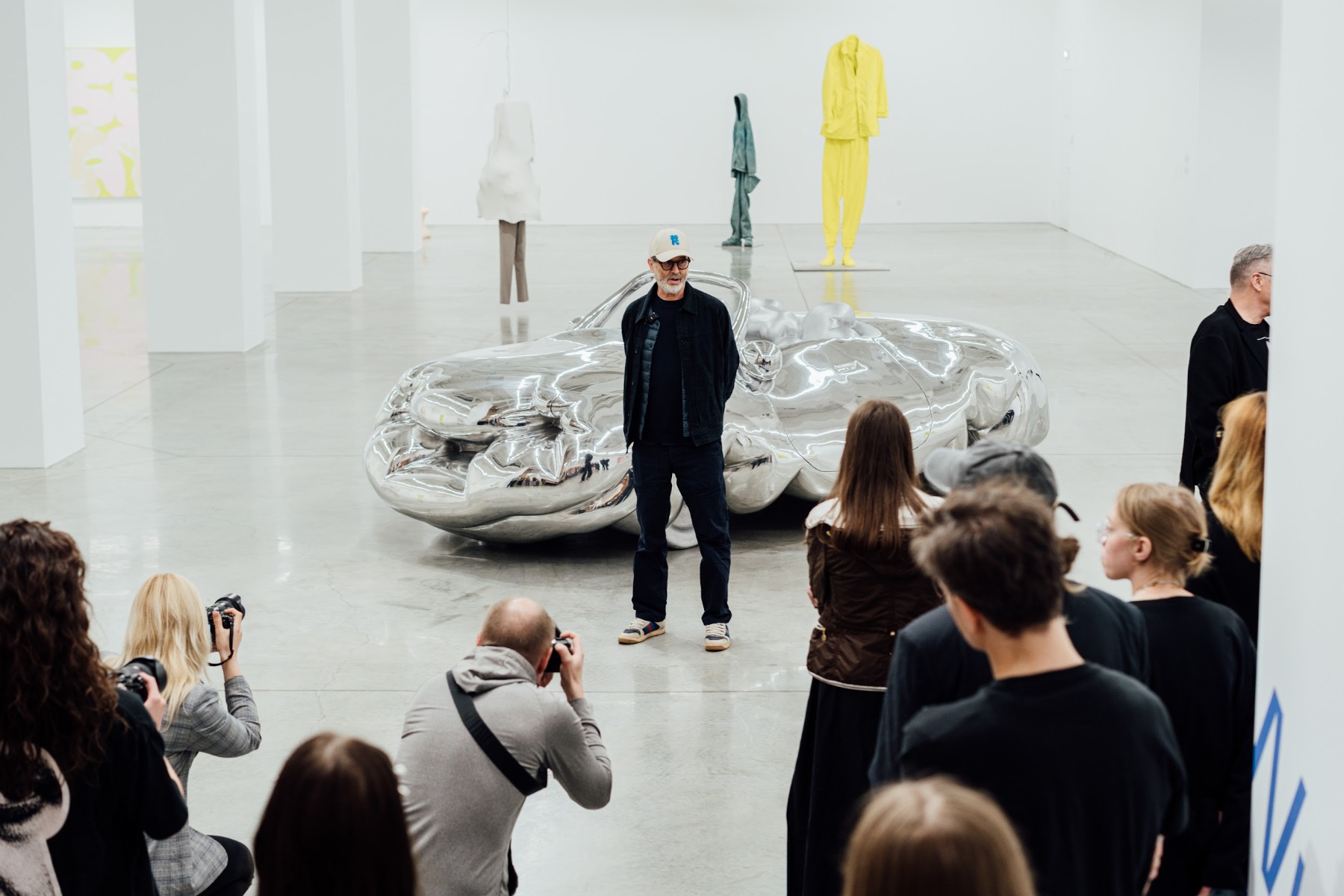
But you know, a few days ago in Naples, I saw a guy with a Polaroid camera, and he was actually making a lot of money—everyone wanted a real, physical photo.
True, I can imagine, yeah. A few years ago, I had access to one of the large Polaroid cameras—you know, there are only four or five of them in the world, maybe six or seven. They produce these huge Polaroids. I used one and created a series of photographs, but those were the last photos I ever took. It was a great experience, but you can’t exhibit them because they’re very sensitive to light—you have to keep them in the dark, and that’s annoying.
Photo: Arterritory.com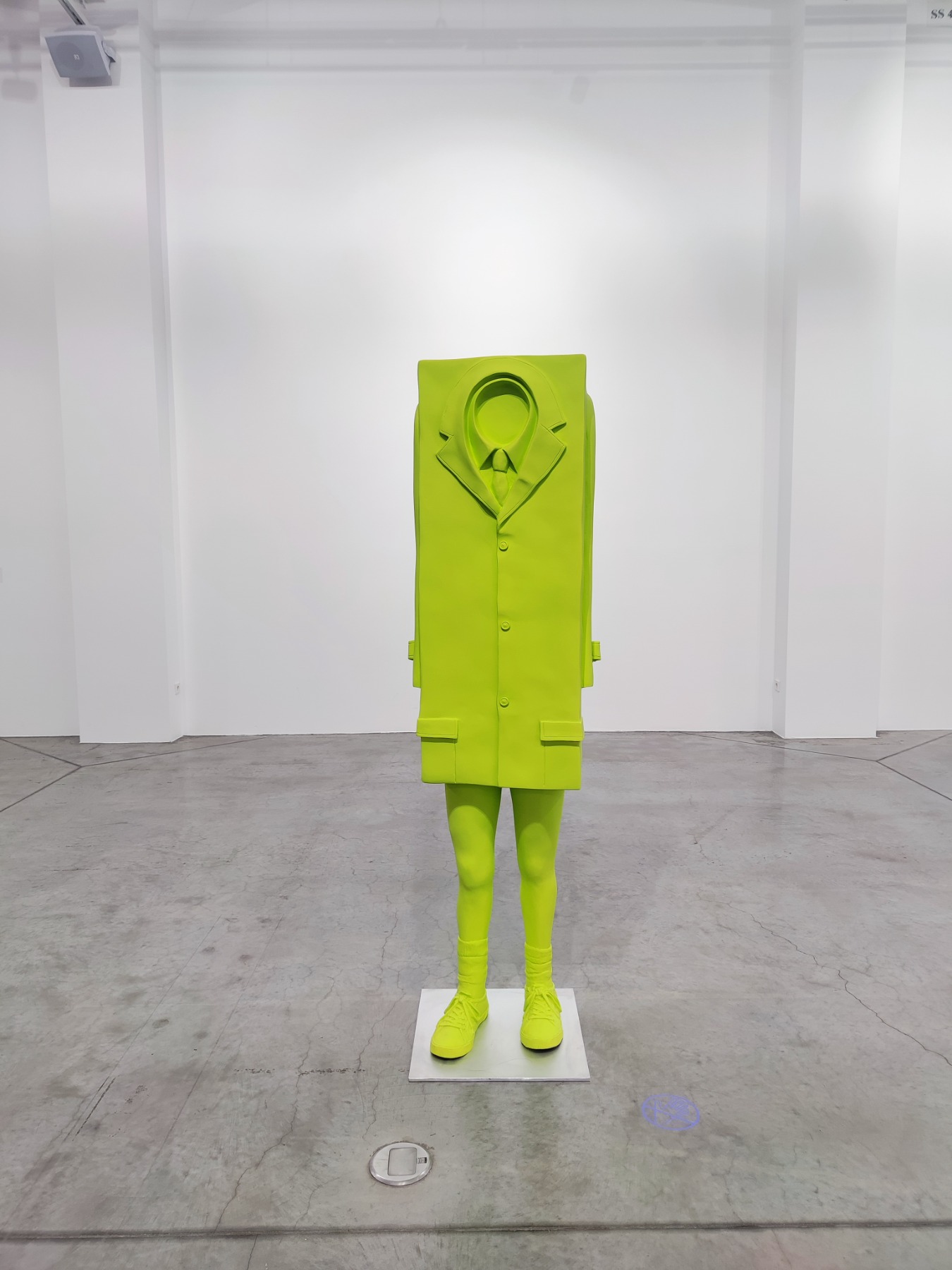
In a way, it seems that most of your ideas come from your childhood—not all of them, of course, but many.
In a way, maybe yes. You want to know why? I don’t know. I’m not sure — maybe it’s psychological. I didn’t have any particular problem with my childhood. My father was a Nazi, a policeman, but we found our peace. He didn’t like what I did, and I didn’t like what he did, but in the end, we made peace. We were on speaking terms, and it was nice. He was a loving man.
For me, childhood has become a kind of synonym — a symbol of an old-fashioned society that, in some ways, turned rotten. I keep reflecting on that, because I think today’s society is very similar. People just don’t see it. Maybe I'm wrong, but I'm pretty sure I'm not wrong.
Photo: Arterritory.com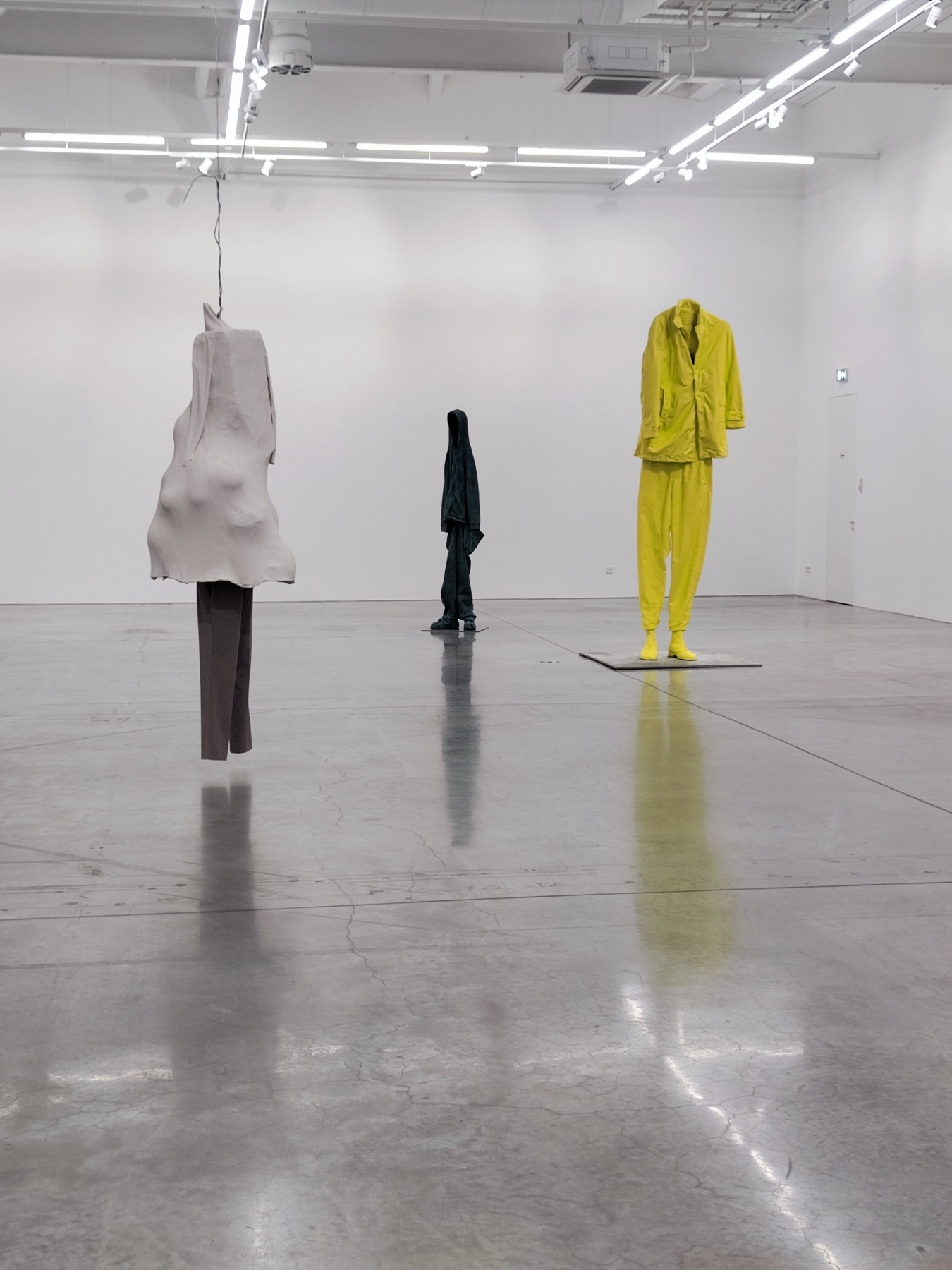
When you create your One Minute Sculptures, the human body plays a central role. What is your relationship to the body, and how do you see it? Also, how do you view the way different people interact with these works?
Everything is about the human entity. We are human — so I work with humans: the spiritual aspect, the physical body, our labor, what we eat. All of it. The entire universe around us revolves around our own perspective, and each person is the center of their own universe. That’s what interests me. That’s what I work with. I enjoy it — though I don’t even know why. Maybe it’s not free will. Maybe it’s just something that happens.
Photo: Arterritory.com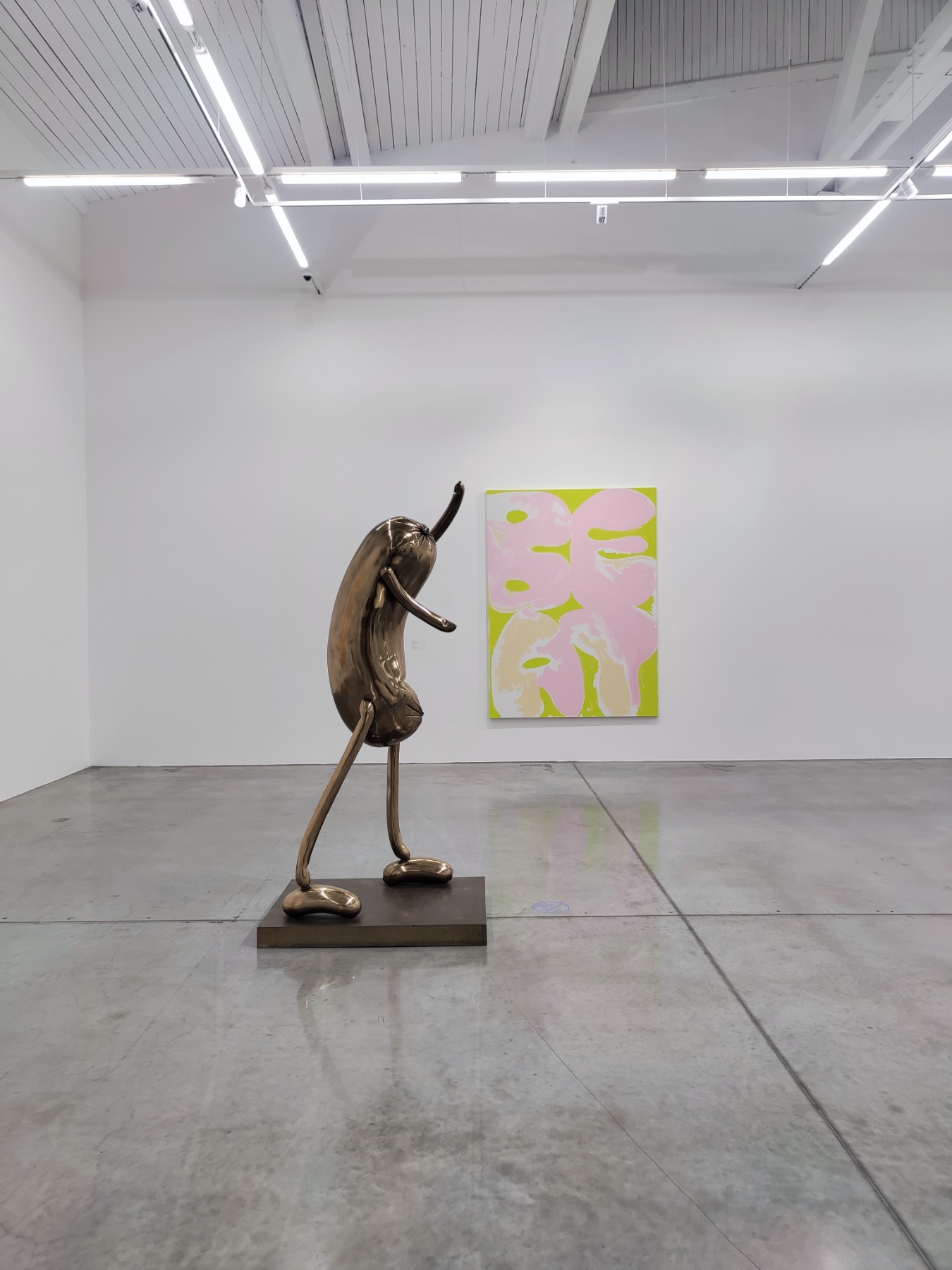
In a way, you seem to enjoy taking very ordinary and ephemeral things — like cucumbers or bananas — and casting them in solid, lasting materials.
You know why? Because I’ve never liked pathos. Do you know what pathos means? Yeah — I hate it. And many artists work with pathos. I won’t name names now, but they’re big, impressive. When we stand before work full of pathos, we feel small, overwhelmed.
But I like to make people levitate — to feel enlightened in a different way. That’s why I approach certain issues from other angles. I’m drawn to the small, the marginal, the seemingly trivial — and even the big, silly things, like cars.
Basically, I’m interested in everything that surrounds us. I’ve worked with tables, carpets, vases, bottles... At a certain point in my artistic life, I realized that every object we see can be the beginning of an artwork.
But is there a clear boundary between art and design? Because we always seem to want to divide.
I’m not interested in design. I’m an artist. But I do use design. I use a car because it’s there. I’m not interested in the specific form of the car, but I use it as a symbol of a certain society. When I was little, we liked the Fette Autos because they were the cars of rich people. I was impressed by rich people. My father was a policeman, and we had little money.
Every young boy in the ’60s was impressed by Fette Autos or Fette Tasche. In Germany, the expression Fette Tasche still exists. It means “big bag” or “great bag.” I enjoy playing around with these words, meanings, and ideas.
Photo: Ansis Starks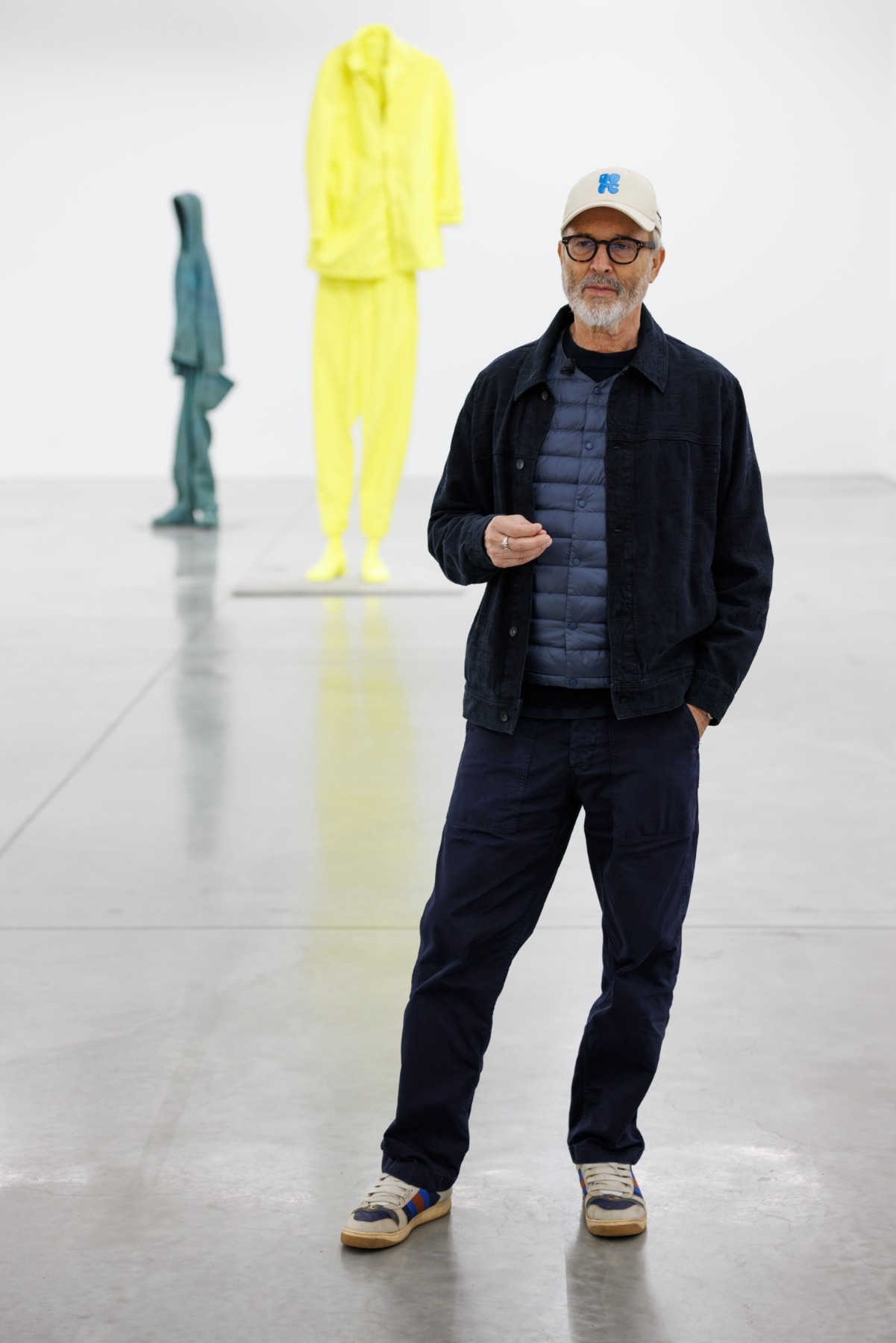
You mentioned the word “levitation,” and that you want people to experience that feeling. I remember an interview with a Buddhist monk who said that, of course, if we look back in history, there were people who could actually levitate. But why can’t we do it now? It’s because we don’t trust ourselves enough to believe that we can.
We don’t believe it. We don’t trust it. Yeah, maybe that’s right. I recently saw a fantastic documentary — I forgot the name now — about statues of monks meditating. These old monks die while sitting in meditation, and they remain in the same position even after death. Some monks sit for two weeks without starting to rot. Physically and chemically, it can’t be explained. There’s no heartbeat, no breath, no brain activity — they’re dead, but they don’t decompose. It’s a fascinating in-between state. That’s really exciting.
Maybe our biggest problem is that deep down, we don’t truly trust that the world can be a better and safer place.
Yeah, you’re right. Yes.
Title image: Erwin Wurm. Photo by Ansis Starks